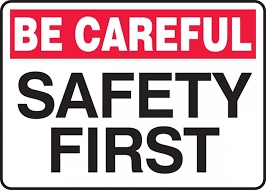Psychedelics and Safety
My last two blog posts were about psychedelic integration. This one is about safety and psychedelics. "Safety" as it relates to psychedelics usually refers to the structure or “container” held by the psychedelic guide or facilitator during the psychedelic journey.
Before we get into what safety means in the psychedelic journey, we need to explore the greater cultural context of “safety”.
Safety exists on a spectrum. On one end is physical safety– being in physical danger or experiencing a trauma. On the other end of the spectrum is emotional safety– which modern research suggests triggers the same “trauma response” in people. From the University of Maryland Medical System…
Trauma is “an emotional response to a distressing event or situation that breaks [a] sense of security.” Traumatic events may be life-threatening, yet any events that overwhelm or isolate can result in trauma. Trauma sets off an “alarm” that triggers the fight or flight response in your body and mind. This heightened state of arousal makes it difficult to feel calm and can be easily reactivated in other situations.
The feeling of being “unsafe” is the same whether we experience a physical trauma or an event that triggers the same emotional feeling.
In this context then, psychedelics are inherently unsafe.Psychedelics have the uncanny ability to retrigger our trauma, and that’s a reason we take them!
The current model is that when we take psychedelics within a structure that “feels safe” we reactivate the trauma to process it and heal from it.
The psychedelic guide then, is there to hold a safe container, or at least help the participants “feel safe”. But how does the guide engender that feeling? Before we get to that, let’s go back to our feelings of unsafety. For many people, the trauma response and feeling unsafe originated in childhood and is related to their parents. Even if people’s parents weren’t actively complicit in that lack of safety through direct abuse, it could be a sense that not enough was done to protect them.
In my experience, most guides (consciously or not) adopt a role where they play some version of the “safe” mom or dad and the "safe container" stems largely from the guide adopting this role. The client then feels safe enough to revisit and heal their trauma with a "good person."
Before I break down this dynamic I want to honor it. I believe there is a lot of good that is done within this framework. I’ve seen people grow and heal within it, and I’m glad that it exists to help people.
My critique comes from 2 places–
It is dependent on the guide’s lack of integration within the therapeutic relationship
It provides no growth for the client outside of this framework.
Both critiques are interrelated.
When I say “lack of integration”, I'm saying that within the relationship the guide cannot allow any parts of themselves to emerge that may make the client feel unsafe. The guide cannot get angry, cannot be overcome with grief, cannot allow an emotion that may make the client feel judged. The guide cannot be a real, whole, complicated person– or at least cannot bring their wholeness into the relationship. The container is created by the guide fracturing and allowing only certain aspects of their personality to be present.
This leads to critique two– if the guide is maintaining the role of good mom or good dad, the client is stuck as the child and there is no more room for growth. Unless the guide has a path towards a more whole relationship or the relationship ends, the client stays a child.
Sometimes, the client sees through the guide’s mask and lashes out because the guide is "not who they thought they were". They see the complicated human underneath and that makes them feel unsafe. The illusion of the "safe" mom or dad has been exposed.
All of this talk about safety also misses the fundamental truth that safety is an illusion, though a useful one at times. We as humans must live with the paradox of having strong motivations for safety and security while also coming to grips with the fact that death is the only thing guaranteed. Isn't our desire for safety just grasping at some semblance of control in a world that feels out of control and chaotic?
However, this lack of feeling safe was always a primal teaching for me when using psychedelics– there is a freedom when we surrender to the fact that we are not in control, and that danger is always present. This surrender is what opens the door to spirit.
If we can’t build a container based on safety then, what can we build it on? Containers are important– but why? And how can we create a healthy container? They “whys” and “hows” will be the structure of my next blog post.

